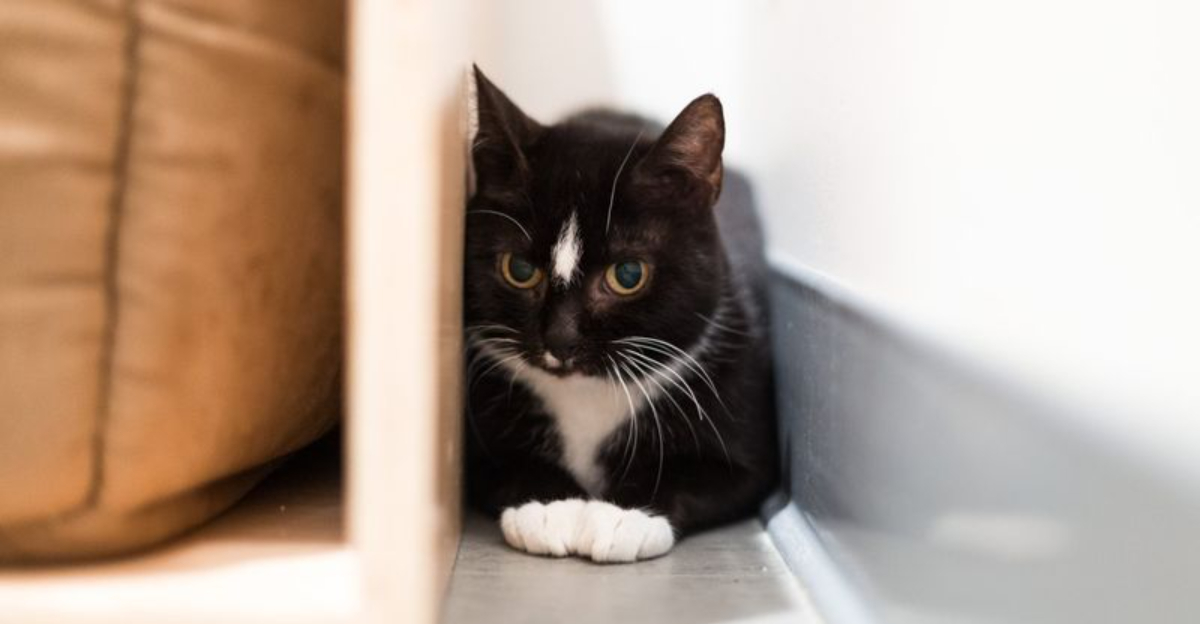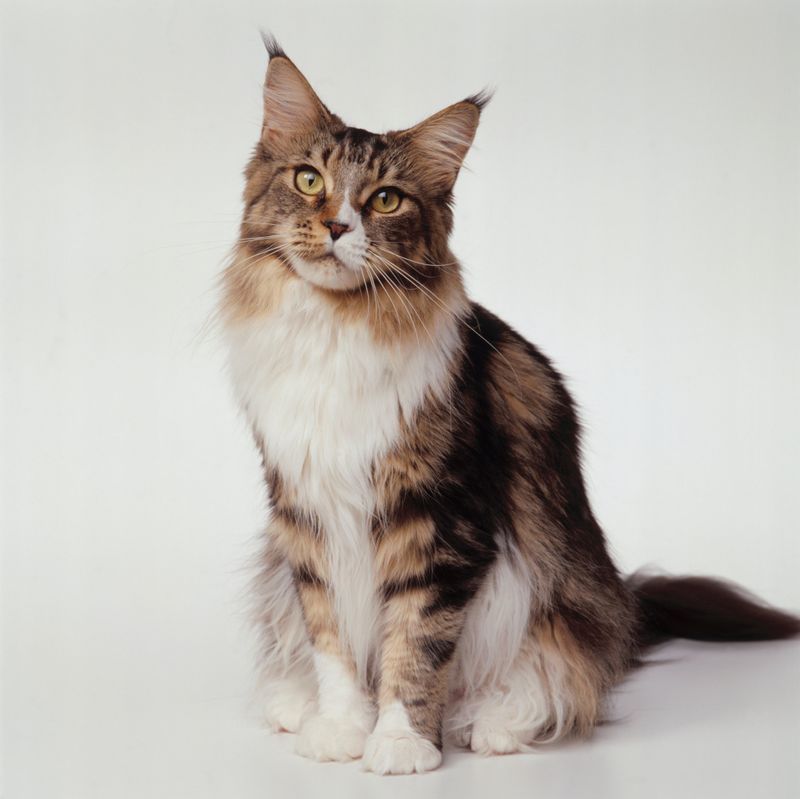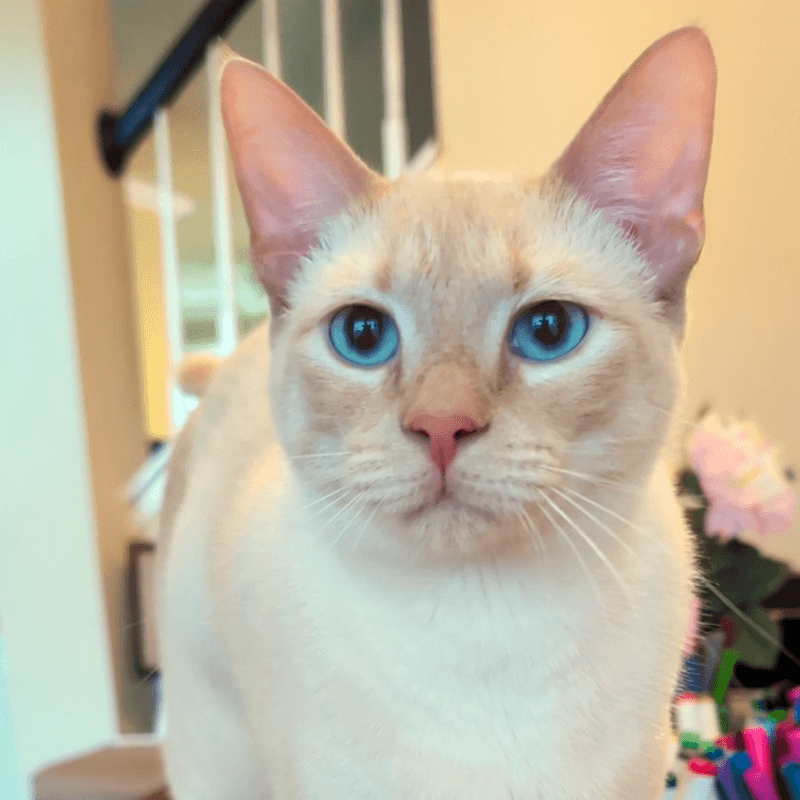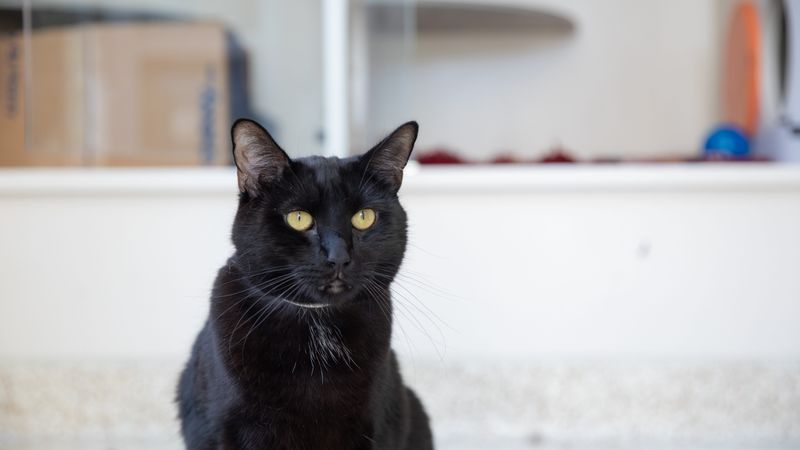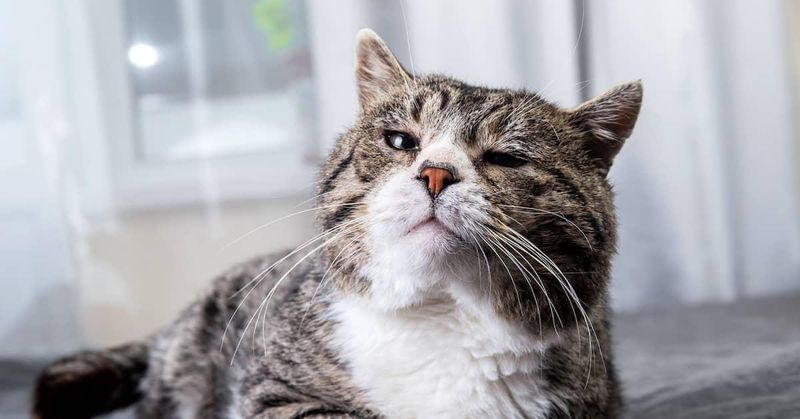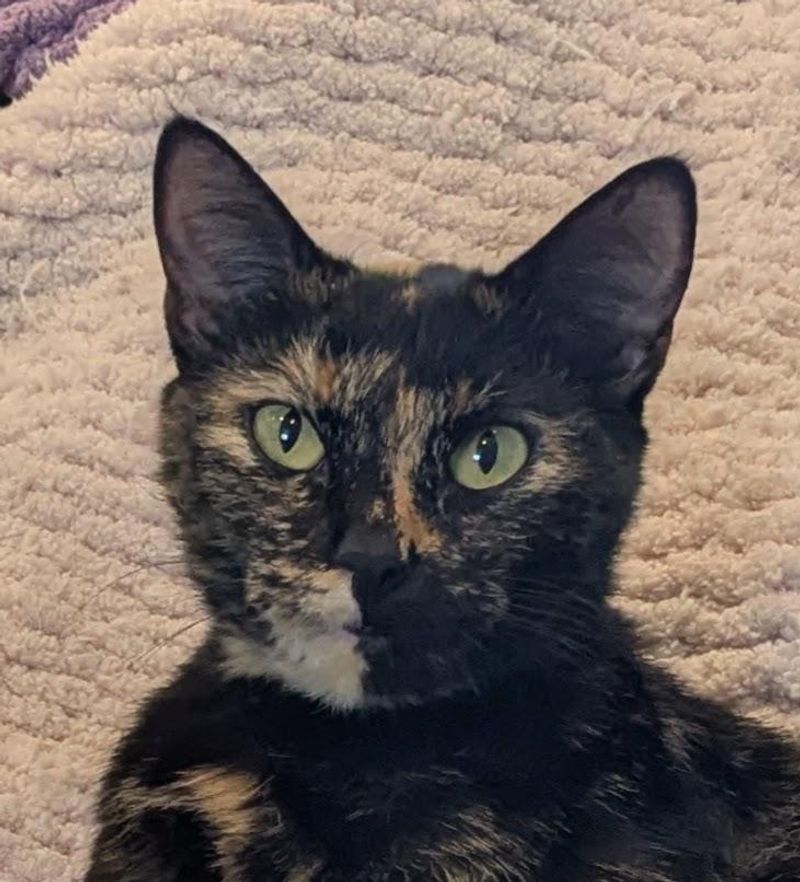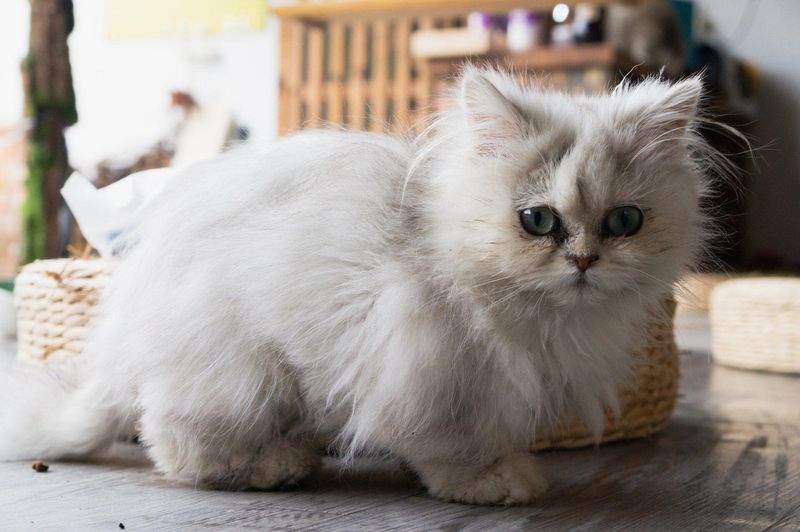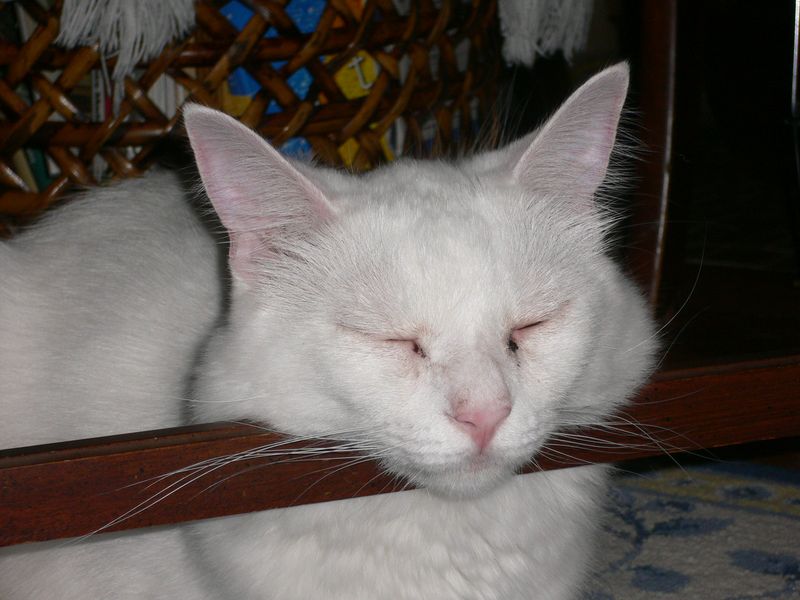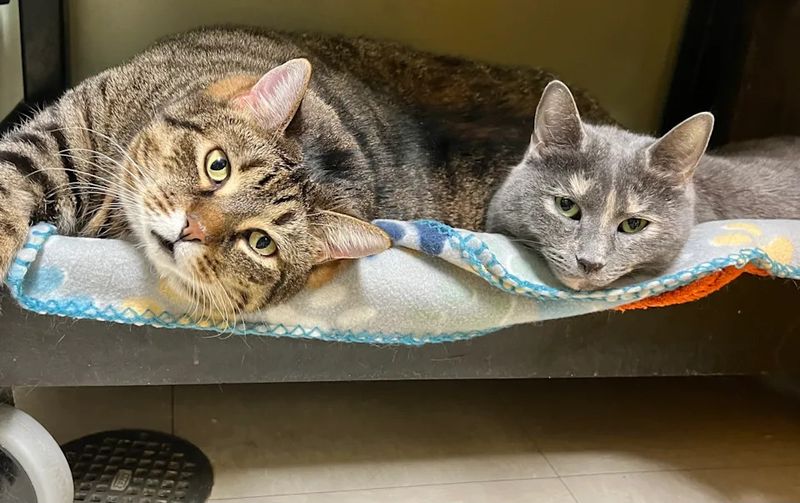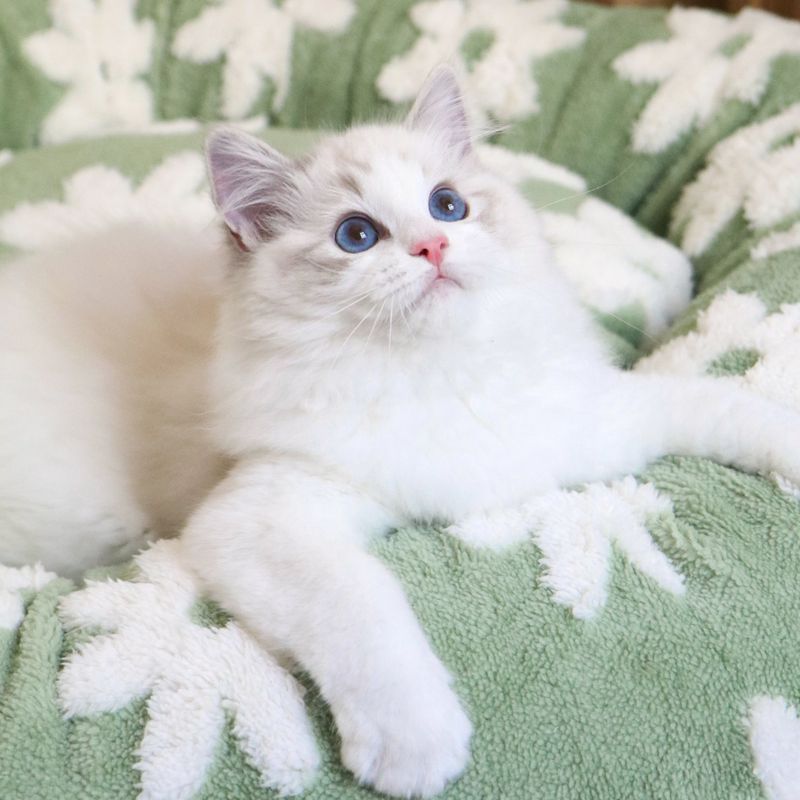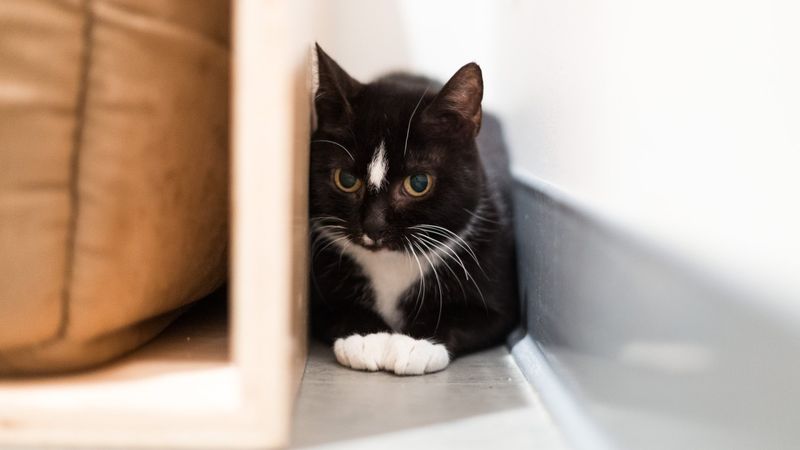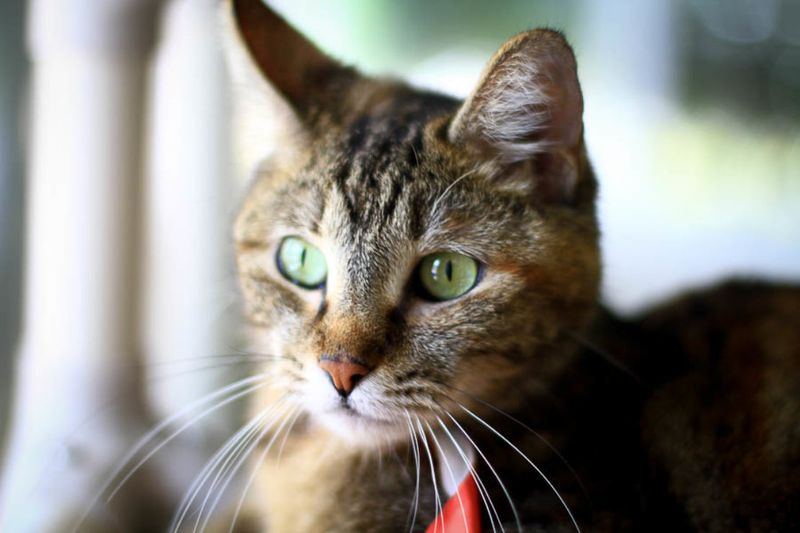📖 Table of Content:
Thousands of cats sit in shelters across the country, waiting for their forever homes. Some have been there for months or even years, watching as other pets get adopted while they remain behind. These sweet felines have incredible personalities and boundless affection to share with the right family. They just need someone to see past their age, appearance, or shyness and give them a chance.
1. Maine Coon
Big-bodied and fluffy, Maine Coons often get overlooked because of their size. Many shelters struggle to find homes for these gentle giants since potential adopters worry about space requirements. Maine Coons are actually perfect apartment cats despite their impressive stature.
They’re typically quiet, patient, and less active than smaller breeds. Their calm temperament makes them excellent companions for families of all sizes. Most Maine Coons in shelters are middle-aged, having outgrown their kitten cuteness but still offering 8-10 years of loving companionship. Their thick coats require regular brushing, but they reward this care with devoted loyalty.
2. Siamese
Vocal and opinionated, Siamese cats sometimes stay in shelters longer because of misconceptions about their chattiness. Their distinctive meows can be misinterpreted as neediness when they’re actually trying to communicate.
Siamese cats form incredibly strong bonds with their humans. They follow their people from room to room, offering commentary and companionship throughout the day. Their intelligence makes them quick learners who thrive with interactive toys and puzzle feeders. Many shelter Siamese are surrendered due to family circumstances rather than behavioral issues. They adjust well to new homes when given patience and understanding during the transition period.
3. Black Cat
Statistics show black cats wait 20% longer for adoption than other colors. Old superstitions and the difficulty of photographing their features contribute to this unfair disadvantage. Black cats often have the most playful, affectionate personalities in the shelter.
Staff frequently note how these ebony felines purr immediately when held and show exceptional social skills with both humans and other animals. Their midnight coats are actually stunning when seen in person, with subtle patterns sometimes visible in sunlight. Many black cats develop depression after long shelter stays. They stop playing and become withdrawn, further reducing their adoption chances. All they need is someone to notice their unique charm.
4. Senior Cat
Cats over 7 years old face steep adoption challenges. Most families want kittens, leaving these mature felines waiting months or years for homes. Senior cats offer tremendous advantages as pets. Their personalities are fully developed, so you know exactly who you’re adopting.
Most are already litter trained, less destructive, and content with simple pleasures like sunny windowsills and gentle pets. They require less supervision than energetic kittens. Many older shelter cats previously had loving homes but lost their families through no fault of their own – owners died, moved to no-pet housing, or developed allergies. These cats remember what family life feels like and are eager to love again.
5. Tortoiseshell
Tortoiseshell cats face longer shelter stays due to misconceptions about their temperament. The “tortitude” stereotype suggests they’re difficult, when most are simply independent thinkers with strong personalities.
These distinctively patterned cats form incredibly loyal bonds with their chosen people. Shelter workers often notice torties selecting favorite volunteers, greeting them with special chirps and headbutts reserved just for them. No two tortoiseshell coats are exactly alike, making each one a unique living artwork. Many torties become depressed in shelter environments where they can’t express their natural confidence. In homes, they blossom into affectionate companions who maintain just enough independence to be low-maintenance pets.
6. Persian
Many adopters pass by Persians in shelters, worried about the grooming their long coats demand. But beneath the tangles and mats are gentle, affectionate cats who thrive with a little care. Once groomed properly, these cats go from neglected and uncomfortable to radiant and thankful companions.
Their quiet, gentle nature makes them perfect for apartment living and calm households. Most Persians bond deeply with their humans, preferring to be near them rather than demanding constant interaction. They express affection through soft purrs and slow blinks rather than jumping in laps, causing some visitors to miss their subtle signs of interest.
7. Special Needs Cat
Because of concerns about cost or care, cats with medical needs are frequently overlooked in shelters. Yet these special felines often form the deepest emotional connections with their adopters, proving just how strong and loving they truly are.
They seem to understand they’ve been given a second chance and show gratitude through exceptional affection. Many conditions that sound serious require simple management – diabetes means regular insulin shots, blindness means consistent furniture arrangement. Shelter staff consistently report that special needs cat adopters experience the most rewarding relationships. These cats’ determination to enjoy life despite challenges inspires their humans daily. Many shelters offer support programs to help with ongoing medical expenses for these deserving felines.
8. Bonded Pair
Finding homes for cats that come as a pair is tough, as many adopters aren’t looking for two. But bonded cats share a deep connection that helps them stay calm and adjust more easily when transitioning into a new family.
They settle in faster, experience less stress, and often display more confident behavior than single cats. Their established relationship means they’ve already worked out territory issues that can cause tension when introducing unfamiliar cats. Most bonded pairs entertain each other when humans are busy, reducing boredom-related behavior problems. Watching their interactions provides endless entertainment for their families. The love between bonded cats shows in their grooming rituals, synchronized napping, and playful chases.
9. Ragdoll
Ragdolls in shelters often get overlooked because their true personalities don’t shine in cage environments. Their tendency to go limp when held (hence the name) isn’t apparent until they feel safe and comfortable. These gentle giants are known for their puppy-like loyalty, often following their humans from room to room and greeting them at the door.
Their semi-long fur requires less maintenance than many people assume, needing just weekly brushing to prevent mats. Shelter Ragdolls frequently come from homes where their size became inconvenient or allergies developed. They remember family life and quickly adapt to new loving environments. Their placid nature makes them excellent companions for seniors and families with children.
10. Shy Cat
Timid cats hiding in shelter corners get passed over repeatedly. Visitors naturally gravitate toward outgoing felines who approach cage doors and solicit attention. Shelter environments overwhelm sensitive cats with constant noise, smells, and stranger interactions.
These same cats often blossom in quiet homes, gradually revealing playful, affectionate personalities as they feel secure. The transformation can be remarkable – from trembling under blankets to confidently claiming favorite spots. Most shy shelter cats have never learned to trust humans or experienced trauma that taught them caution. Patient adopters who respect their boundaries and offer consistent, gentle interaction are rewarded with profound loyalty once these cats feel safe. The moment a formerly fearful cat chooses to sit in your lap feels like winning a special prize.
11. Tabby Cat
Common brown tabbies face the paradox of being overlooked because they’re so ordinary. With no exotic coloring or distinctive features, they blend into the background of busy shelters. Tabby cats consistently rank among the most adaptable, friendly personalities in the feline world.
Their classic ‘M’ forehead marking connects them to ancient Egyptian cats who were worshipped as deities. The swirling patterns on their sides are unique as fingerprints, making each one a walking work of art. Adult tabbies in shelters often have years of experience living with families. They understand household routines and human expectations. Their expressive faces communicate clearly, from slow blinks of affection to the excited tail quiver that signals happiness when their favorite person comes home.
